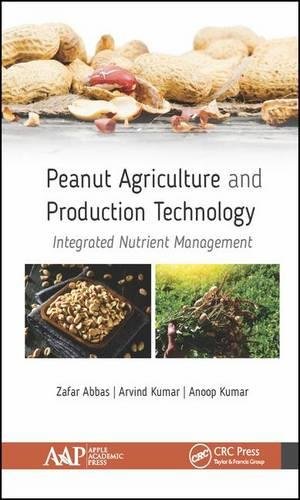

Most ebook files are in PDF format, so you can easily read them using various software such as Foxit Reader or directly on the Google Chrome browser.
Some ebook files are released by publishers in other formats such as .awz, .mobi, .epub, .fb2, etc. You may need to install specific software to read these formats on mobile/PC, such as Calibre.
Please read the tutorial at this link. https://ebooknice.com/page/post?id=faq
We offer FREE conversion to the popular formats you request; however, this may take some time. Therefore, right after payment, please email us, and we will try to provide the service as quickly as possible.
For some exceptional file formats or broken links (if any), please refrain from opening any disputes. Instead, email us first, and we will try to assist within a maximum of 6 hours.
EbookNice Team

Status:
Available4.7
16 reviewsPeanut Agriculture and Production Technology: Integrated Nutrient Management focuses on agricultural techniques and integrated nutrient management of peanuts (Arachis hypogaea L.).Peanuts are the second most important oil crop of India, occupying 5.7 million hectares, with an average production of 0.8 ton/ha, which is 23.5% of the India’s total oil seed production. Worldwide annual production of shelled peanuts was 42 million metric tons in 2014. It is the world’s 4th most important source of edible oil and the 3rd most important source of vegetable protein.
The volume includes basic and advanced information on production, agrotechniques, and integrated nutrient management of Arachis hypogaea L. crop plant. It studies the physiology of the peanut, looking at the proper environmental conditions for optimal growth as well as under various subnormal conditions. It explores the methods of nitrogen application as well as the influence of different sowing dates and population densities to harvest its full yield potential. The book covers methods to achieve balanced nutrition, including using organic manures in groundnut farming to enhance yielding ability.
The book will be a rich resource for those in agriculture, horticulture, and allied sciences, particularly for agricultural scientists in plant and crop physiology, agronomy, and soil science. Farm owners and managers of peanut crops and production will also benefit from the information provided in this volume.